5+ Ways to Make Page Fluffers and Spacers

Sometimes the pages of communication books can be hard to turn, particularly if the pages are stiff or laminated. Here are some tried-and-true methods of putting spacers between the pages to make the books easier for unruly hands to handle.
- Use a small square of soft Velcro to a corner of the page. The adhesive-backed Velcro makes this a quick and easy fix, and it’s a
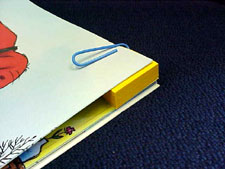 good way to use up leftover scraps.
good way to use up leftover scraps. - Foam stickers from a craft or dollar store work well if you only need a small amount of separation between the pages. We love that you can get them in a wide variety of shapes and themes (e.g., dinosaurs, soccer balls, princess crowns). Great way to personalize the book based on your client’s interests.
- Colorful pom-pom’s can be hot-glued to one end of a paper clip. Use the other end to clip the fluffer to the page. We like them both because they’re cute, but also because they are removable. Great way to make library books more accessible.
- A not-so-pretty but very quick and functional way to make a fluffer is to use adhesive-backed weather stripping (the kind you put around windows to keep the draft out in chilly weather). These are another good dollar store find. Snip off a little bit, attach it to the corner of a page, and you are set to go. There is a great post on making these portable (removable) on the wonderful blog, Adapting Creatively.
- Scraps of foam core can also be used as page fluffers. You can either glue them directly on a page or to a paperclip, if you need a removable spacer. The OATC has a good demo of them on their site.
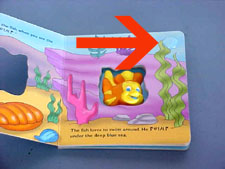
- Board books present a special challenge because they are already thick and bulky. I like using a hot glue gun to put a drop of glue on the outside corner because you can make it as thin or thick as you want. Also, they are unobtrusive and help kids stay focused on the text and illustrations. Make sure to let each page dry before going on to do the next one.
For more reading on this topic, check out blog posts on Glenda’s AT site and the Montana Deafblind Project.
Images/Miami Dade PreK ESE/ http://prekese.dadeschools.net/AS/booksandliteracy.html
Filed under: PrAACtical Thinking
Tagged With: adapted books, literacy, page fluffer, physical access, spacer
This post was written by Carole Zangari

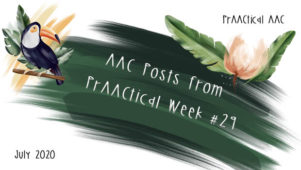
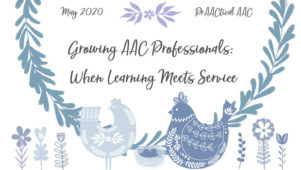

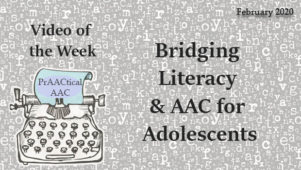
4 Comments
Students in my grad class recently were asked to do a literacy assignment and part of that assignment was to make the hard copy of their book more accessible with page fluffers. I didn’t give them any specifics but showed them a couple of examples. The students were very creative as I suspected they would be! A couple of ideas not listed here: one student put paper clips on the page and used a strong magnetic “bingo chip” wand to turn each page (if the student can’t easily grasp the wand we talked about ways of adapting the wand/page turner), another student used the round fuzzy dots that are used on the feet of furniture to keep them from scratching up the floor. They are a nice size and thickness and are similar to your fuzzy velcro idea (but perhaps a bit thicker).
Thanks for these additional ideas – I particularly like the hot glue idea!
Jeanne, I love the prAACtical bent to that assignment. It gets them thinking about what their clients will really need and get some practice pulling together all of the details. The hot glue is one of my favorites, too (when I’m in the mood to get out the hot glue gun), but the idea of using the furniture leg protectors is great, too. Thanks for sharing your students’ creative ideas!
We were told as parents of a child with multi disabilities , which included weak hand strength and decreased vision. To take the small furinature stickers that are round and soft. On the top right corner of every page. It not only helped open the book pages but created a routine for when her vision goes. She can still turn the pages because she knows what she is feeling for. It was also suggested to use the page tab dividers and glue them on but creating the staggering effect .
Those are great strategies, Aimee! We’ve also use adhesive-backed weather stripping, which is very economical when you are adapting a lot of materials. Thanks for taking the time to share your ideas!